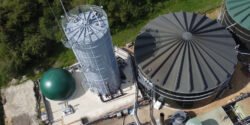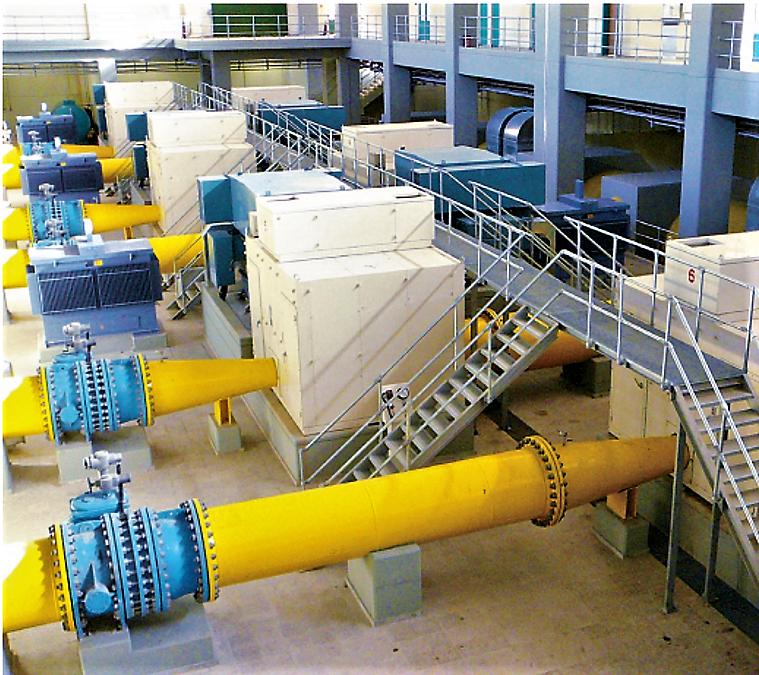
Yarn-based Water Filtration

Yarn-Based Water Filtration: An Innovative Solution for Clean Water Access
Access to clean and safe drinking water is a fundamental human right, yet millions of people around the world still lack access to this basic necessity. Contaminated water sources can lead to a host of health problems, including waterborne diseases such as cholera, typhoid, and dysentery. In developing countries, the lack of proper infrastructure and resources often exacerbates this issue, leaving communities vulnerable to the harmful effects of waterborne pathogens.
Traditional water filtration methods, such as ceramic filters or chemical treatments, can be effective but can also be expensive and require a consistent supply of resources. In recent years, researchers and engineers have been exploring alternative and innovative solutions to provide clean water to those in need. One such solution that has gained traction in recent years is yarn-based water filtration.
Yarn-based water filtration involves the use of specially treated yarns to filter out impurities and contaminants from water sources. This method leverages the porosity and structure of the yarn to trap particles and pathogens, providing a cost-effective and sustainable solution for water purification. This article will explore the science behind yarn-based water filtration, its potential applications, and the benefits it offers for communities in need of clean water.
The Science Behind Yarn-Based Water Filtration
Yarn-based water filtration relies on the physical and chemical properties of the yarn to effectively remove impurities from water. The yarn is typically made from natural fibers such as cotton, wool, or bamboo, which are known for their high surface area and porosity. This porosity allows the yarn to effectively trap particles and pathogens as water passes through it, acting as a physical barrier to contaminants.
In addition to the natural properties of the yarn, researchers have also developed methods to enhance its filtration capabilities. One common approach is to treat the yarn with antimicrobial agents or other chemicals that can further improve its ability to remove pathogens from water. These treatments can help kill bacteria and viruses on contact, preventing them from passing through the yarn and contaminating the water.
The structure of the yarn also plays a key role in its filtration capabilities. Yarns can be woven or knitted into various configurations, such as mats, nets, or filters, that maximize their surface area and contact with the water. This allows for greater filtration efficiency and ensures that more contaminants are removed from the water as it passes through the yarn.
One of the key advantages of yarn-based water filtration is its simplicity and scalability. Yarns are readily available materials that can be easily processed and assembled into filtration devices. This makes yarn-based filtration a cost-effective solution that can be implemented in a variety of settings, from rural communities to emergency relief situations.
Applications of Yarn-Based Water Filtration
Yarn-based water filtration has a wide range of potential applications, from household water treatment to larger-scale community water systems. In rural and low-income communities, where access to clean water is limited, yarn-based filters can provide a simple and affordable solution for purifying water from local sources such as rivers, lakes, or wells.
Household water filters made from yarn can be easily constructed using basic materials and tools, making them accessible to communities with limited resources. These filters can be placed on water containers or integrated into existing water storage systems to provide a constant supply of clean water for drinking, cooking, and other domestic uses.
In addition to household filtration, yarn-based water filters can also be used in larger community water systems. By scaling up the production and implementation of yarn filters, entire communities can benefit from clean and safe drinking water. This approach has been successfully implemented in several developing countries, where communities have seen significant improvements in water quality and health outcomes as a result.
Yarn-based water filtration also has applications in emergency and disaster relief situations, where access to clean water is often compromised. Portable yarn filters can be quickly deployed to provide clean water to affected populations, preventing the spread of waterborne diseases and improving the overall resilience of disaster-affected communities.
Benefits of Yarn-Based Water Filtration
Yarn-based water filtration offers several key benefits that make it an attractive solution for providing clean water to communities in need. Some of the main benefits include:
1. Cost-effectiveness: Yarn is a readily available and affordable material that can be easily processed and assembled into water filters. This makes yarn-based filtration a cost-effective solution for communities with limited resources.
2. Sustainability: Yarn-based water filters are made from natural fibers that are biodegradable and environmentally friendly. This makes them a sustainable choice for water purification, reducing the impact on the environment and supporting long-term water management efforts.
3. Accessibility: Yarn-based filters can be easily constructed using basic materials and tools, making them accessible to communities with limited technical expertise. This allows for greater participation and ownership of the water filtration process at the local level.
4. Effectiveness: Yarn-based filters have been shown to effectively remove pathogens and impurities from water sources, providing clean and safe drinking water for communities in need. The physical and chemical properties of the yarn enhance its filtration capabilities, ensuring that contaminants are trapped and removed from the water.
5. Scalability: Yarn-based filtration systems can be scaled up to meet the needs of larger communities and emergency situations. By increasing production and distribution of yarn filters, more people can benefit from access to clean water and improved health outcomes.
Challenges and Future Directions
While yarn-based water filtration shows great promise as a cost-effective and sustainable solution for clean water access, there are still challenges that need to be addressed to maximize its potential. Some of the key challenges include:
1. Water quality monitoring: Ensuring the effectiveness of yarn-based filters requires regular monitoring of water quality to assess the level of contamination and the performance of the filtration system. This requires resources and technical expertise that may be lacking in some communities.
2. Long-term sustainability: While yarn-based filters are biodegradable and environmentally friendly, their long-term sustainability depends on proper maintenance and replacement of the filters. Communities will need support and resources to ensure that filters are replaced as needed to maintain water quality.
3. Education and training: Proper usage and maintenance of yarn-based filters require education and training for communities to ensure that filters are used correctly and effectively. This requires investment in community outreach and capacity-building efforts to promote sustainable water management practices.
4. Research and development: Continued research and development are needed to improve the efficiency and effectiveness of yarn-based water filtration systems. This includes exploring new treatments, materials, and designs that can enhance the performance of yarn filters and expand their applications to new settings.
Despite these challenges, yarn-based water filtration offers a promising solution for providing clean and safe drinking water to communities in need. By leveraging the natural properties of yarn and enhancing its filtration capabilities, researchers and engineers can continue to develop innovative solutions that address the global water crisis and improve public health outcomes.
Conclusion
Yarn-based water filtration represents a simple, cost-effective, and sustainable solution for providing clean and safe drinking water to communities in need. By harnessing the physical and chemical properties of yarn, researchers and engineers have developed filtration systems that effectively remove pathogens and contaminants from water sources, improving overall water quality and public health outcomes.
With its simplicity, scalability, and accessibility, yarn-based water filtration has the potential to make a significant impact on the global water crisis, particularly in developing countries and emergency situations. By investing in research, development, and implementation of yarn filters, policymakers and organizations can ensure that more people have access to clean water and the basic human right to safe drinking water is upheld for all.


